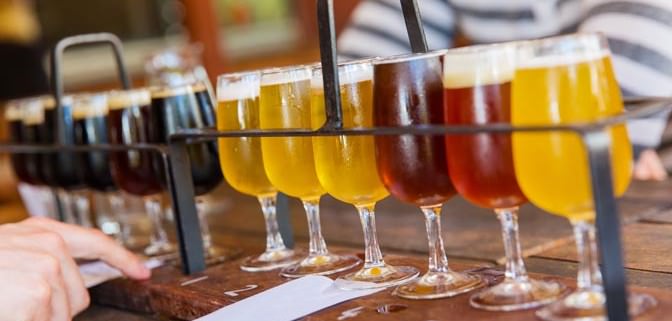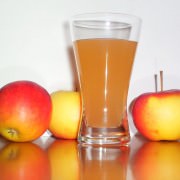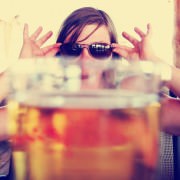Top 2014 Beer Trends for Restaurants
It’s undeniable that the craft beer industry is booming–but how about your restaurant? Your diners may now search out restaurants based on the number of craft brews they carry, and if your menu carries a large variety of brews on tap, you’ve probably been dominating the scene. However, with so many brews now available at the local liquor store, your restaurant can no longer survive just by playing a numbers game. You need a strategy, and that starts with identifying and capitalizing on the latest beer trends. Here are the top beer trends you need to know about to keep your sales strong in the competitive holiday season.
Sour Beer
Sour beer isn’t a misnomer. The beer’s taste ranges from “slightly tart” to “Sour Patch Kid,” and some beer drinkers find it to be an exciting addition to the craft beer flavor palate.
What is it?
Sour beer gets its distinctive taste from the wild yeast it’s brewed with. Since the Middle Ages, brewers have been trying to get the sour taste of beer out, but now American breweries are defying convention by bringing beer back to it’s funky basics.
Restaurant benefit
Since sour beer is an exotic niche item in a market that is defined by exotic niche items, simply advertising that you have sour beers should bring the curious masses to your tables. If you don’t have the advertising budget to spend right now, you can make sour beer a featured item on your menu and keep the interest level high… as well as the buzz.
Wet-Hopped Brews
Creating what some have called “the real seasonal brew,” wet hopping is gaining followers who want to pursue a more authentic, fresher beer experience.
What is it?
“Wet hopping” is simply a fancy term for making beer from fresh hops. Usually, hops are picked and dried before shipping, but “wet hopped” beer is brewed with fresh picked, earthy tasting hops.
Restaurant benefit
By carrying, featuring, and advertising your wet-hopped beer, you can boost your sales within the seasonal-foods market. If your restaurant is known for its home-cooked meals that draw on traditional and unpreserved ingredients, this beer will be a natural fit. If you’re better known for your nouvelle fusion foods, you’ll want to stress the “newness” of this beer scene.
Lower Alcohol Quantities
I’m sure you’ve noticed the recent swing toward less boozy beers, but have you started carrying them on your menu? These days, you should switch up your marketing and menu placement by highlighting the lower alcohol options (called “Session” beers), as opposed to placing your emphasis on your Imperial drinks.
What is it?
I just kept this section because the formatting looked prettier this way. You know what a lower alcohol content is, so I won’t insult your intelligence.
Restaurant benefit
Beers with a lower alcohol volume tend to cost less, and they encourage your guests to drink more. With these two benefits, you can push up those margins with these flavor-filled beers. Keep a lookout for low-alcohol holiday flavors as you’re ordering.
Hop Varieties
Did you know that there are a LOT of different types of hops? Each type of hop results in a different taste to the beer… and if you’ve got a lot of hop types in the beers on your menu, you’ll want to make that a selling point.
What is it?
In a general sense, hops are to beers as grape varietals are to wine. They add flavor, aroma, and other important element to each beer, and the new hybrids of hops change beer flavors and bitterness-levels significantly. Some common types of hops are Centennial, Willamette, and Cascade.
Restaurant benefit
If you’ve got beers with varied hops, advertise it. Not only can different hop styles give your tasting menu a reboot, it can also bring in the craft-beer curious (or the craft beer snooty) to try out your restaurant.
To Sum Up
Whether it be sourness, hop varieties/processing methods, or just a lower alcohol level, there’s always something to learn or to show off regarding your beer selection. Feature your beers’ interesting attributes to drive alcohol sales and build your restaurant’s word-of-mouth marketing strength.
- Why Your Wine Menu Is Scaring Your Guests - February 27, 2015
- How to Host a Better Restaurant Week and Get More Customers - February 23, 2015
- Choosing Your Restaurant Wine Glass – 3 Approaches - February 16, 2015









